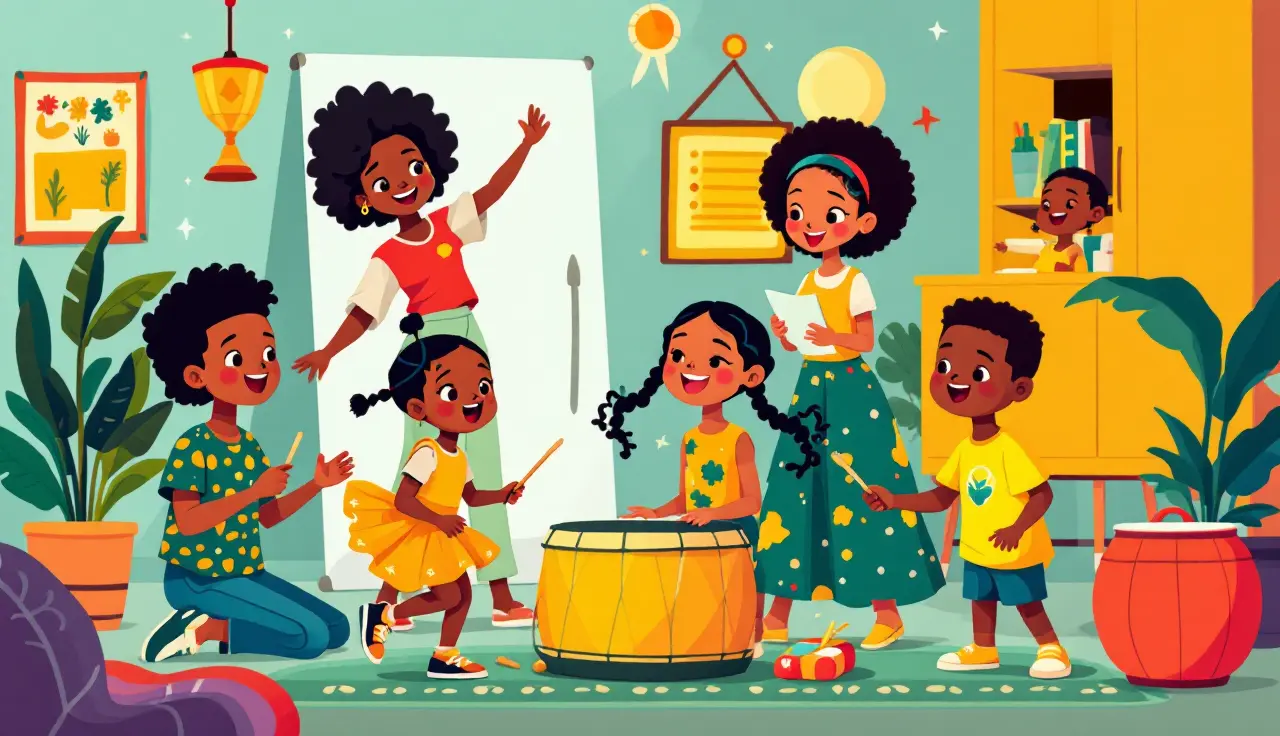By Lionel Kubwimana
••7 min read
Simple ways to use African dance and drumming to help your kids learn and love their heritage language. Fun activities that work at home or in community groups.

Picture this: It's Saturday afternoon at a community center in Atlanta. Kids are laughing, drums are beating, and something amazing is happening. Children who usually struggle with their family's language are suddenly excited to learn.
The Nkurunziza family from Burundi knows this feeling. At home, they speak Kirundi. At school, their kids use English. Like many African families in America, they worried their children might lose their heritage language.
Regular flashcards felt boring. Online apps didn't hold their kids' attention. But when they tried a program that mixed Kirundi lessons with African dance and drumming, everything changed.
Their kids started clapping out new words, dancing while they practiced, and actually asking to do more language time at home.
Here's the big question many African parents face: How do we keep our kids connected to their roots while helping them succeed in American schools?
The answer might be simpler than you think. African dance and drumming can turn language learning from a chore into something your kids actually want to do.
Scientists have been studying how kids learn best. Here's what they found:
Kids who move while learning remember more. When children dance or clap while learning new words, their brains work harder and store information better.
Studies from schools in New York, Chicago, and other cities show:
Why does this work? When your child moves while learning a word, different parts of their brain light up at the same time:
All these brain areas working together makes learning stick better.
African dance isn't just movement - it's storytelling with your whole body. For hundreds of years, African communities have used dance to:
When your kids learn through African dance, they're not just moving around. They're connecting with their ancestors and learning that their culture has value.
Two examples that show this power:
Gumboot Dance from South Africa: Gold miners created this dance to communicate secretly when they couldn't talk at work. Every stomp and clap had meaning.
Kpanlogo from Ghana: Young people created this dance in the 1960s to express themselves. It mixed old traditions with new ideas.
These dances show kids that African culture is creative, smart, and strong.
Drums do more than make music - they can actually help kids learn to speak better.
Here's how different drums can help:
Three ways drumming helps in the classroom:
You don't need to be a dancer or drummer to help your kids. Here are easy things you can try today:
You don't need real drums. Use:
When kids learn through dance and drumming, good things happen in other areas too:
One of the best parts about African dance and drumming is how it brings people together.
Ready to try this with your family? Here's how to begin:
You don't need to be perfect. Your kids just want to have fun with you. Simple movements work just as well as fancy ones.
Most activities can be done in a living room or even sitting down. Focus on hand movements and clapping if space is tight.
Teenagers might resist at first, but many end up enjoying it. Let them choose the music or create their own movements.
Use what you have: pots, boxes, or just clapping. The rhythm matters more than the instrument.
Start with simple movements you make up. The goal is connecting movement with language, not perfect technique.
Technology is making this easier for families:
Community centers and schools are also catching on:
Learning your heritage language doesn't have to be a struggle. When you add African dance and drumming, it becomes something your whole family can enjoy together.
Start this week:
Remember: You're not just teaching language. You're showing your children that their culture is valuable, their heritage is worth preserving, and learning can be joyful.
Every beat, every step, every word you practice together builds a bridge between your family's past and your children's future. That bridge will help them feel proud of who they are while giving them tools to succeed wherever life takes them.
Ready to start? Pick up a wooden spoon, find a pot, and let's make some rhythm together. Your kids' language journey begins with just one beat.